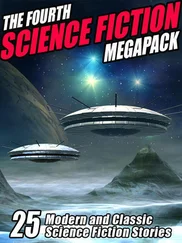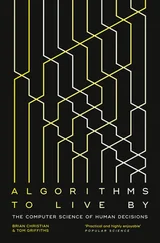Carl Sagan - Broca's Brain - The Romance of Science
Здесь есть возможность читать онлайн «Carl Sagan - Broca's Brain - The Romance of Science» весь текст электронной книги совершенно бесплатно (целиком полную версию без сокращений). В некоторых случаях можно слушать аудио, скачать через торрент в формате fb2 и присутствует краткое содержание. Жанр: Физика, на английском языке. Описание произведения, (предисловие) а так же отзывы посетителей доступны на портале библиотеки ЛибКат.
- Название:Broca's Brain: The Romance of Science
- Автор:
- Жанр:
- Год:неизвестен
- ISBN:нет данных
- Рейтинг книги:3 / 5. Голосов: 1
-
Избранное:Добавить в избранное
- Отзывы:
-
Ваша оценка:
- 60
- 1
- 2
- 3
- 4
- 5
Broca's Brain: The Romance of Science: краткое содержание, описание и аннотация
Предлагаем к чтению аннотацию, описание, краткое содержание или предисловие (зависит от того, что написал сам автор книги «Broca's Brain: The Romance of Science»). Если вы не нашли необходимую информацию о книге — напишите в комментариях, мы постараемся отыскать её.
Broca's Brain: The Romance of Science — читать онлайн бесплатно полную книгу (весь текст) целиком
Ниже представлен текст книги, разбитый по страницам. Система сохранения места последней прочитанной страницы, позволяет с удобством читать онлайн бесплатно книгу «Broca's Brain: The Romance of Science», без необходимости каждый раз заново искать на чём Вы остановились. Поставьте закладку, и сможете в любой момент перейти на страницу, на которой закончили чтение.
Интервал:
Закладка:
The probability, then, that the comet would have impacted the Earth only some tens of years after its ejection from Jupiter is between one chance in 1 million and one chance in 3 trillion, on the two assumptions on membership in existing debris populations. Even if we were to suppose that the comet was ejected from Jupiter as Velikovsky says, and make the unlikely assumption that it has no relation to any other objects which we see in the solar system today-that is, that smaller objects are never ejected from Jupiter-the mean time for it to have impacted Earth would be about 30 million years, inconsistent with his hypothesis by a factor of about 1 million. Even if we let his comet wander about the inner solar system for centuries before approaching the Earth, the statistics are still powerfully against Velikovsky’s hypothesis. When we include the fact that Velikovsky believes in several statistically independent collisions in a few hundred years (see text), the net likelihood that his hypothesis is true becomes vanishing small. His repeated planetary encounters would require what might be called Worlds in Collusion.
APPENDIX 2
Q. Now, Mr. Bryan, have you ever pondered what would have happened to the Earth if it had stood still?
A. No. The God I believe in could have taken care of that, Mr. Darrow.
Q. Don’t you know that it would have been converted into a molten mass of matter?
A. You testify to that when you get on the stand. I will give you a chance.
THE GRAVITATIONAL acceleration which holds us to the Earth’s surface has a value of 10 3cm sec −2= 1 g. A deceleration of a = 10 −2g = 10 cm sec −2is almost unnoticeable. How much time, τ, would Earth take to stop its rotation if the resulting deceleration were unnoticeable? Earth’s equatorial angular velocity is Ω = 2π/P = 7.3 × 10 −5radians/sec; the equatorial linear velocity is RΩ = 0.46 km/sec. Thus, τ = RΩ/a = 4600 secs, or a little over an hour.
The specific energy of the Earth’s rotation is







where I is the Earth’s principal moment of inertia. This is less than the latent heat of fusion for silicates, L 4 × 10 9erg gm −1. Thus, Clarence Darrow was wrong about the Earth melting. Nevertheless, he was on the right track: thermal considerations are in fact fatal to the Joshua story. With a typical specific heat capacity of c p= 8 × 10 6erg gm −1deg −1, the stopping and restarting of Earth in one day would have imparted an average temperature increment of ΔT 2E/c p100°K, enough to raise the temperature above the normal boiling point of water. It would have been even worse near the surface and at low latitudes; with v RΩ, ΔT v 2/c p240°K. It is doubtful that the inhabitants would have failed to notice so dramatic a climatic change. The deceleration might be tolerable if gradual enough, but not the heat.
APPENDIX 3

THE HEATING of Venus by a presumed close passage by the Sun, and the planet’s subsequent cooling by radiation to space are central to the Velikovskian thesis. But nowhere does he calculate either the amount of heating or the rate of cooling. However, at least a crude calculation can readily be performed. An object which grazes the solar photosphere must travel at very high velocities if it originates in the outer solar system: 500 km/sec is a typical value at perihelion passage. But the radius of the Sun is 7 × 10 10cm. Therefore a typical time scale for the heating of Velikovsky’s comet is (1.4 × 10 11cm) / (5 × 10 7cm/sec) 3000 secs, which is less than an hour. The highest temperature the comet could possibly reach because of its close approach to the Sun is 6,000° K, the temperature of the solar photosphere. Velikovsky does not discuss any further sun-grazing events by his comet; subsequently it becomes the planet Venus, and cools to space-events which occupy, say, 3,500 years up to the present. But both heating and cooling occur radiatively, and the physics of both events is controlled in the same way by the Stefan-Boltzmann law of thermodynamics, according to which the amount of heating and the rate of cooling both are proportional to the temperature to the fourth power. Therefore the ratio of the temperature increment experienced by the comet in 3,000 secs of solar heating to its temperature decrement in 3,500 yrs of radiative cooling is (3 × 10 3secs/10 11secs)1/4 = 0.013. The present temperature of Venus from this source would then be at most only 6000 × 0.013 = 79° K, or about the temperature at which air freezes. Velikovsky’s mechanism cannot keep Venus hot, even with very generous definitions of the word “hot.”
The conclusion would not be altered materially were there to have been several close passes, rather than just one, through the solar photosphere. The source of the high temperature of Venus cannot be one or a few heating events, no matter how dramatic. The hot surface requires a continuous source of heat-which could be either endogenous (radioactive heating from the planetary interior) or exogenous (sunlight). It is now evident, as suggested many years ago (see Wildt, 1940; Sagan, 1960), that the latter is the case: it is the present radiation of the Sun, continuously falling on Venus, which is responsible for its high surface temperature.
APPENDIX 4
ALTHOUGH VELIKOVSKY has not, we can calculate approximately the order of magnitude of the magnetic field strength necessary to make a significant perturbation on the motion of a comet. The perturbing field might be from a planet, such as Earth or Mars, to which the comet is about to make a close approach, or from the interplanetary magnetic field. For this field to play an important role, its energy density must be comparable to the kinetic energy density of the comet. (We do not even worry about whether the comet has a distribution of charges and fields which will permit it to respond to the imposed field.) Thus, the condition is

where B is the magnetic field strength in gauss, R is the radius of the comet, m its mass, v its velocity and ρ its density. We note that the condition is independent of the mass of the comet. Taking a typical cometary velocity in the inner solar system of about 25 km/sec, and ρ as the density of Venus, about 5 gm/cm 3, we find that a magnetic field strength of over 10 million gauss is required. (A similar value in electrostatic units would apply if the circularization is electrical rather than magnetic.) Earth’s equatorial surface field is about 0.5 gauss. The fields of Mars and Venus are less than 0.01 gauss. The Sun’s field is several gauss, ranging up to several hundred gauss in sunspots. Jupiter’s field as measured by Pioneer 10 is less than 10 gauss. Typical interplanetary fields are 10 −5gauss. There is no way to generate anything approaching a 10 megagauss field on a large scale in the solar system. And there is no sign that such a field was ever experienced in the vicinity of Earth. We recall that the magnetic domains of molten rock in the course of refreezing are oriented by the prevailing field. Had Earth experienced, even fairly briefly, a 10 Mg field 3,500 years ago, rock magnetization evidence would show it clearly. It does not.
Читать дальшеИнтервал:
Закладка:
Похожие книги на «Broca's Brain: The Romance of Science»
Представляем Вашему вниманию похожие книги на «Broca's Brain: The Romance of Science» списком для выбора. Мы отобрали схожую по названию и смыслу литературу в надежде предоставить читателям больше вариантов отыскать новые, интересные, ещё непрочитанные произведения.
Обсуждение, отзывы о книге «Broca's Brain: The Romance of Science» и просто собственные мнения читателей. Оставьте ваши комментарии, напишите, что Вы думаете о произведении, его смысле или главных героях. Укажите что конкретно понравилось, а что нет, и почему Вы так считаете.











